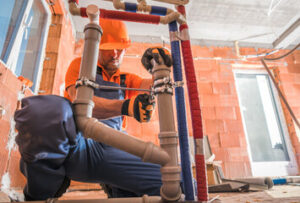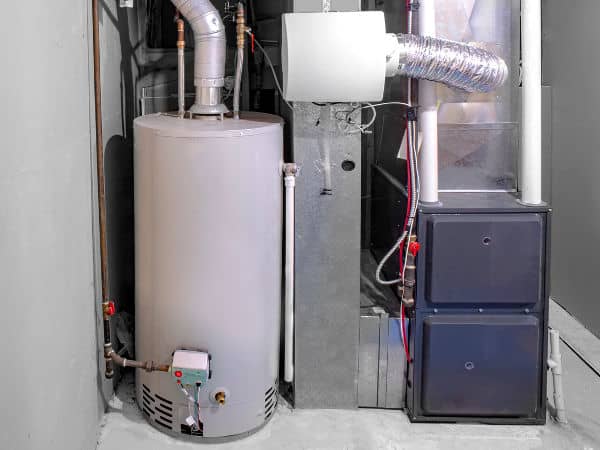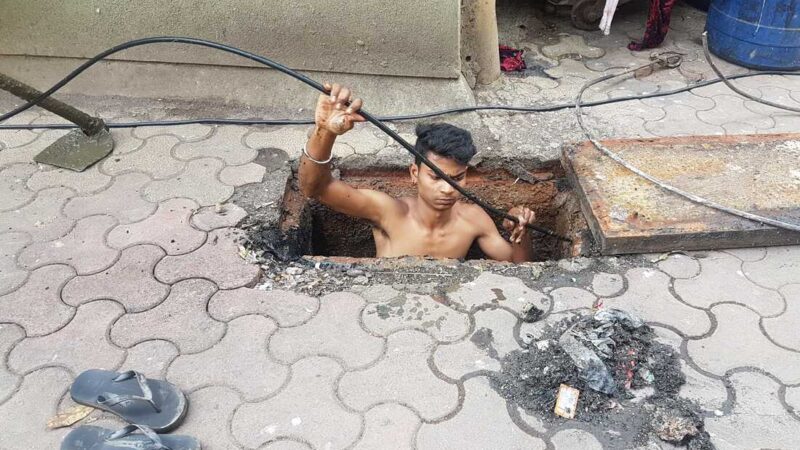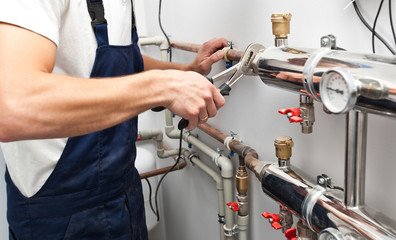Remodeling Plumbing – Why It’s Important to Run New Pipes
Remodeling is an excellent way to change your home without buying a new one. However, it is important to plan and take into account the plumbing.
If you can, try to keep the plumbing footprint and layout of your bathroom the same as it is now. Changing the plumbing layout or footprint can add significantly to your remodeling costs. Check out https://www.platinumplumbingsbc.com/ to learn more.
 Replacing Old Pipes
Replacing Old Pipes
While a plumbing remodel may involve installing new fixtures and appliances, it’s also the perfect opportunity to replace old pipes. It’s one of the most important things you can do to upgrade a home’s plumbing system.
If you have copper or galvanized steel pipes in your home, it’s time to have them replaced. These outdated materials rust easily and can damage the rest of your plumbing system over time. Rust can affect water quality and release chemicals like methyl tertiary butyl ether into your drinking water. This chemical is known to cause cancer, and it’s best to avoid drinking rusty water as much as possible.
Removing and replacing old pipes is a large project, but it can save you money in the long run. Pipes that are leaking, corroding, or covered in scale can lead to extensive and expensive damage over time. Pipe replacement removes these threats and ensures that your water supply is clean and healthy.
The costs of pipe replacement depend on a few factors, such as the scope of the remodeling project and the type of pipes in place. If the pipes need to be rerouted, this can add to the cost of the project. In addition, if the pipes are buried under or behind walls, it’s often necessary to open these spaces to gain access and install new pipes.
When remodeling, it’s a good idea to consult with a professional plumber before starting. They can help you decide whether to repair or replace the existing pipes and recommend the best products for your home. They can also advise you on the best materials to use for your home’s plumbing system and budget.
Replacing old pipes is a major undertaking, but it’s worth the investment. Especially in older homes, it’s important to have old pipes replaced. Old pipes can rust, which affects the quality of your water and can cause leaks that can damage your property and health. Leaking pipes can also contaminate the soil and cause flooding. A professional plumber will be able to advise you on the best type of pipe for your home and its climate, as well as what kind of insulation is required.
Routing New Pipes Through Existing Cavities
The pipes that power faucets, showers, and toilets are usually hidden behind walls and under floors, a setup that makes running new lines challenging. Whether you’re remodeling an existing bathroom, or kitchen or building an addition to a home, the process involves running pipes and creating new paths for them.
This is a project that requires careful planning and execution. A professional plumber has experience with the nuances of residential plumbing and will be able to help you plan your remodel, including any issues that may arise. A good plumber will also be able to recommend convenient upgrades that you can add to your remodel.
Whenever possible, it’s best to route your plumbing through existing cavities. This can save you a lot of time and money as opposed to opening up new spaces and cutting through floor joists. For example, if you’re adding a new sink in your bathroom, you can run the drain line through an old towel rack space or unused laundry chute. Laundry chutes are particularly useful for routing plumbing as they are often open and offer easy access to the bottom of the chute.
It’s important to keep in mind that when re-routing your plumbing, you will need to be cautious about where you place the drain line. The drain line will need to be above the floor joists and not too close to other fixtures. Otherwise, you could end up with clogged pipes and leaks.
It’s also a good idea to create a diagram of your new layout. This will make it much easier to visualize the changes you’re making and will help you ensure that your pipes are being routed correctly. A high-quality piece of digital software for your smartphone will allow you to quickly and easily sketch a diagram and fill it in with your pipe sizes and locations. It’s worth the investment as it will help you avoid costly mistakes and will help your contractor complete your plumbing remodel on time and within budget.
Reconfiguring Pipes Around Floor Joists
A major plumbing remodeling job often involves reconfiguring the paths that drain pipes take through a house’s floor joists. It’s best to keep drain lines within the spaces created by joists since cutting joists weakens them and can lead to structural problems later on.
For example, moving a toilet to a new location typically requires a significant amount of work because the toilet’s waste pipe must be routed through the floor and up through the wall. It’s possible to do this if the joists can accommodate it, but the plumber must take extra care to ensure that the slope for the drain line is correct and that the new position is not blocking the toilet vent.
If the joists are too close together, a plumber must sister or add new joists to create enough space for the new path. The new joists must be anchored to the existing ones with construction adhesive and nails, and holes or notches must be cut into them so that water line studs can pass through. New blocking must also be installed on either side of the joists.
Similarly, rerouting a sink or tub drain for a remodeling project often requires creating new pathways that are less obtrusive than the old ones. It might be possible to tuck the new drain line under a floor, but it’s usually easier and less expensive to drop it down through the ceiling and box it in with wood-framed soffits.
As you plan your customers’ plumbing reconfiguration projects, be sure to check for local building codes that might apply. These may require that a new drain pipe be supported with straps on both sides, for instance, or that it slope down at a rate of 1/4 inch per foot or more.
Exposure to excessive moisture can damage wooden joists, so it’s important to use copper or plastic pipe hangers to support any new pipes that run along the bottom of walls and cabinets in a room. Joists can also be infested by mold, rot, carpenter ants, and other pests, so it’s important to protect them with fire caulking and by not drilling through them or placing heavy objects on them.
Creating a Plumbing Plan
When remodeling plumbing, it is important to create a plumbing plan to ensure that the new system is up to code. It is also important to be aware of any issues with the existing plumbing system. This will help avoid costly mistakes during the remodeling process.
Plumbing plan drawings are created to show how pipes will be run throughout the home. They are often used by construction professionals to guide the installation of new systems, as well as by homeowners during the home improvement process.
A plumbing plan diagram can be drawn on paper or using a digital drawing program. Using a program that has automatic measuring and sketching features can make the job much easier. Some programs even have templates that can be downloaded for free. Once the template is imported into a digital program, it can be edited to suit the needs of the project.
One of the most important elements of a plumbing plan is a drainage system diagram. This will indicate where the drains, sewer lines, and water lines will enter the home. This can be a big factor when deciding to remodel a house because it will help the homeowner decide if a basement is needed.
The next part of a plumbing plan is the plumbing fixture list. This will include the name of each fixture as well as its location. Lastly, the diagram will include the pipe sizes and types. The plumber can use this information to order the proper parts and fixtures for the project.
When drafting a plumbing plan, it is important to use universal symbols for each type of fixture. This makes the diagram easier to read and understand. For example, supply lines are usually indicated by solid lines and drainpipes are indicated with broken lines. Using these symbols can save time and effort for the plumber during installation.
When creating a plumbing plan, it is important to consider whether or not the current fixtures are functional and attractive. If they aren’t, the homeowner should consider replacing them. However, if the fixtures are operable and still look good, it is a better idea to refinish them with attractive coatings. This will save the homeowner money and will also be environmentally friendly.





